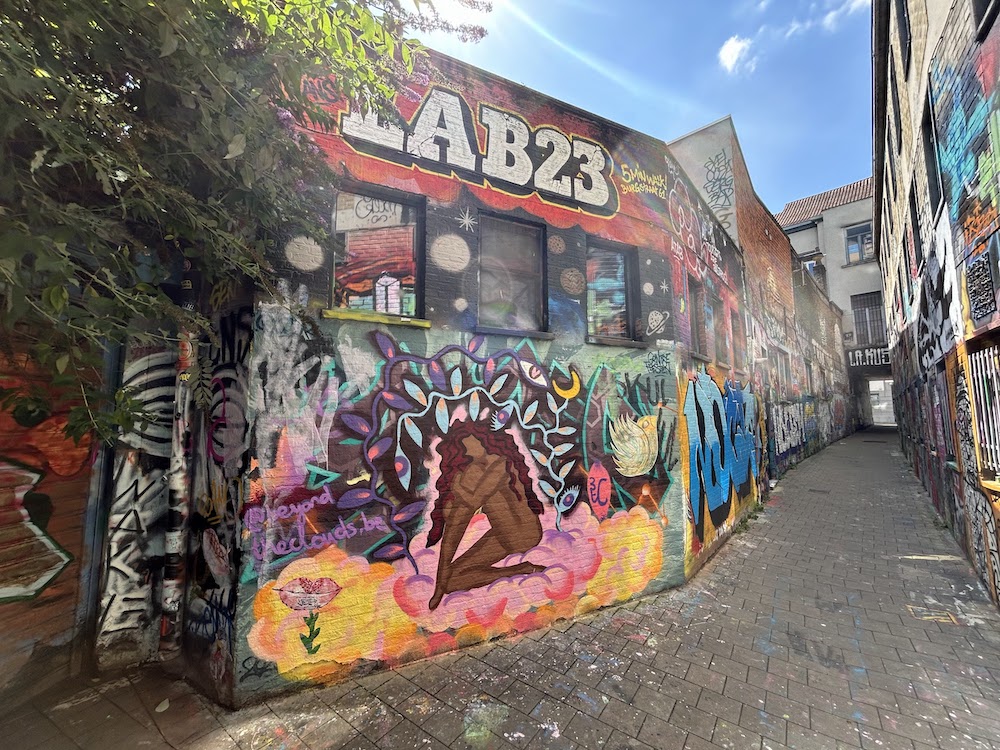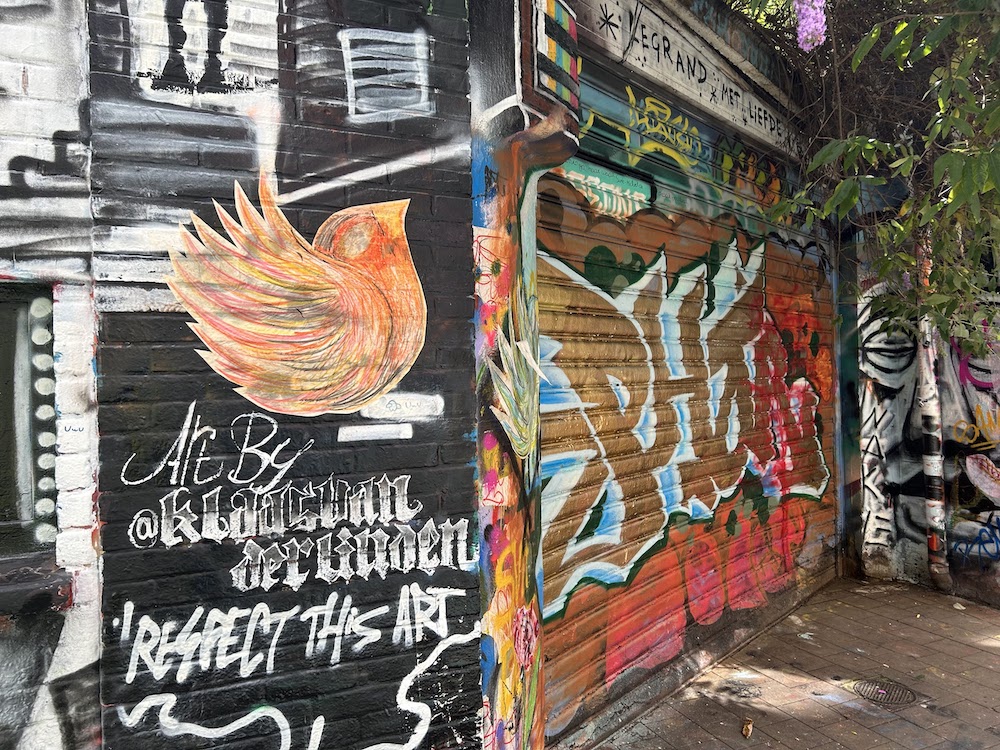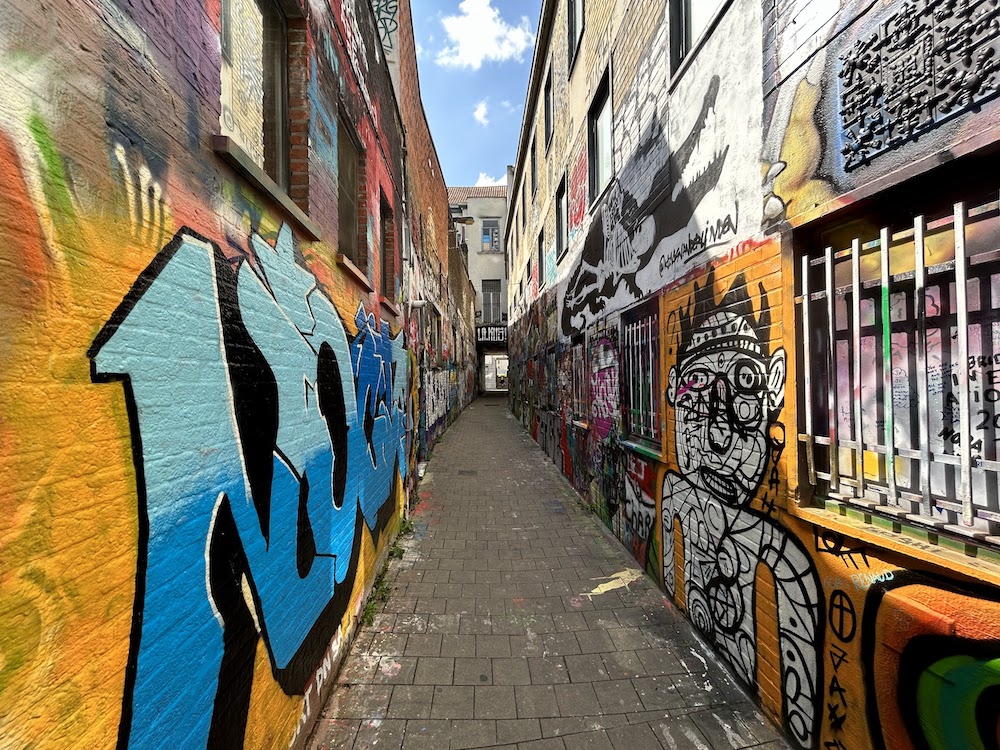At a time when many cities were struggling with the issue of graffiti, Ghent opted for inclusivity and recognition.
Ghent, a bastion of culture and inclusiveness, has set an example for many cities with its innovative approach to graffiti. Where graffiti is often seen as a sign of decay and unwanted vandalism, Ghent has found a unique way to embrace, regulate and celebrate it as a legitimate art form.
In the heart of Ghent lies the Werregarenstraat, better known as the 'Graffitistraatje'. This car-free street has been given the unique status of a tolerance zone for street artists. What started in 1995 as a modest graffiti project during the Ghent festivities has now transformed into a continuously changing canvas that offers a kaleidoscope of colours. Every wall tells a different story, every tag has its own voice.

The remarkable thing about this tolerance zone is that, although it is officially not allowed to place permanent pieces and tags, artists will not be arrested for their activities in the alley. But with freedom comes responsibility. The unwritten rules of respect apply here: admire and preserve works of art that are artistically superior and ensure that the local residents can live in peace.
Sorry, Not Sorry Street Art plan Ghent
Ghent has put itself on the map as a graffiti-friendly city, where prominent artists such as Roa and Bué the Warrior have left their mark. For those who want to experience the city from a unique perspective, it offers 'Sorry, not sorry street art' plan an organized cycling or walking route along the most impressive street art of Ghent.
Street art fanatics are in the right place with this map on which all kinds of open-air art is indicated. The walk past street art in the city center is doubly interesting, because in addition to an introduction to Ghent street art, this is also a tour along a number of tourist highlights. The street art scene in Ghent is vibrant and fits wonderfully well with the historic city.
thoughtful approach
This progressive approach has not only given many facades a vibrant makeover, but also created a positive framework for street artists. Thanks to the policy of the Ghent city council, and in particular of alderman Rudy Van Quaquebeke in 1996, there are now several tolerance zones for graffiti that give artists a safe and respected place to show their talents.

The history of graffiti is as complex as the art itself. Often seen as the voice of the oppressed or simply a rebellion against the establishment, graffiti has always had a place in the history of urban cultures. The roots of graffiti go back further than many realize, with examples of early “tags” left behind by ancient civilizations thousands of years ago. But it's in the second half of the 20th century that graffiti really took off, especially in cities like New York and Philadelphia.
Ghent, with its rich history and dynamic urban culture, was not untouched by this movement. In the 80s and 90s, the city saw an increase in graffiti, which was often seen as a sign of decline and rebellion. Many of these early works were characterized by political messages, a call for social justice, or simply a way for young people to make their mark on the city.

Tourists are drawn to the vibrant streets armed with cameras to capture each unique piece of art.
However, instead of simply suppressing this expression, Ghent chose a different route. In order to preserve its historic buildings and at the same time provide space for this new form of artistic expression, the city council introduced tolerance zones for graffiti. This was a groundbreaking decision, giving street artists the freedom to create without fear of repercussions, while keeping the rest of the city safe from unwanted “tags”.
The result? A thriving community of street artists enriching the city with their works. What started as simple tags evolved into complex murals and impressive pieces that addressed social, political and cultural issues. Artists such as Roa, known for his large-scale depictions of animals, and Bué the Warrior, whose playful and colorful style brightens up the city, have transformed Ghent into an open-air museum of street art.



